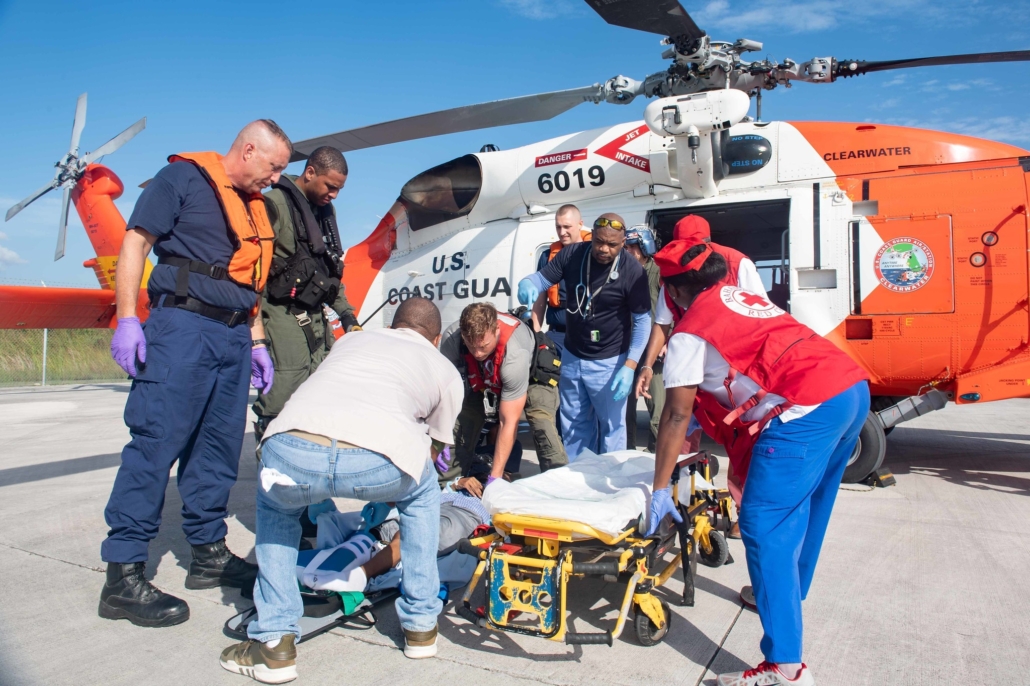How Project HOPE Provided Aid After Hurricane Dorian in The Bahamas
 On September 1, 2019, Hurricane Dorian swept across The Bahamas, claiming the lives of 74 people, with 282 people still missing, and causing $3.4 billion of damage. According to the United Nations Office for the Coordination of Humanitarian Affairs, the storm affected 76,000 people. To date, it is the worst-ranked storm to ever hit the country. Project HOPE, a global health and non-governmental organization, was among the first to provide emergency aid to the area.
On September 1, 2019, Hurricane Dorian swept across The Bahamas, claiming the lives of 74 people, with 282 people still missing, and causing $3.4 billion of damage. According to the United Nations Office for the Coordination of Humanitarian Affairs, the storm affected 76,000 people. To date, it is the worst-ranked storm to ever hit the country. Project HOPE, a global health and non-governmental organization, was among the first to provide emergency aid to the area.
Economic Vulnerability of The Bahamas
Situated in the Caribbean, The Bahamas are an archipelago of 700 islands, only 30 of which are inhabited. Famed for its white beaches and clear water, the area is a popular vacation destination. Between January and July 2023, 5.89 million tourists visited the islands.
While high rates of tourism promise economic profitability, reliance on tourism to support the economy places the country in a vulnerable position. In 2023, the Investment Climate Statement of The Bahamas reported only 30% of the country’s GDP stems from non-tourism-related services and more than half of the workforce is part of the tourism industry. With the Bahamas’ GDP heavily reliant on tourism, natural disasters and external factors such as COVID-19 can cause the economy to greatly suffer.
The Damage that Hurricane Dorian Caused
The catastrophic damage of Hurricane Dorian included the destruction of more than 13,000 homes, forcing many to evacuate. Project HOPE reports that on the Island of Abaco, which was among the worst regions affected, only 20% of all buildings were left unscathed. Medical attention and supplies, food, sanitary water, gas and electricity supplies were all impeded.
Project HOPE’s Impact
Project HOPE’s emergency response team (ERT) was able to reach Nassau, the capital of the Bahamas, three days after the hurricane. Working in conjunction with the locally registered NGO Restoration Abaco, they delivered more than 16,000 critical relief and hygiene supplies, including body bags, soap, bandages, diapers, toothbrushes and drinking water. The ERT also ensured the donated supplies were usable and organized them efficiently. Overall, Project HOPE delivered more than $3 million of medical supplies. It also set up a triage and examination area in the Fox Hill Community Center, where more than 200 survivors were sheltering.
Hope for the Future
Although the initial impact of the hurricane was visibly evident, its long-term consequences continue to impact the region. Project HOPE provides ongoing support for recovery and rebuilding in The Bahamas. It conducts first-aid and health care training through Creole-speaking volunteers to the Haitian population, is rebuilding damaged infrastructure and provides crucial psychological support to survivors. Investing in long-term solutions for The Bahamas allows the sowing of the seed of hope and creates greater resilience against future extreme weather events.
At the end of 2022, the International Trade Administration reported that the government of The Bahamas has subsequently invested in light manufacturing, agriculture, fisheries and renewable energy to diversify The Bahamas’ economy.
– Heidi Helen Horgan
Photo: Flickr
